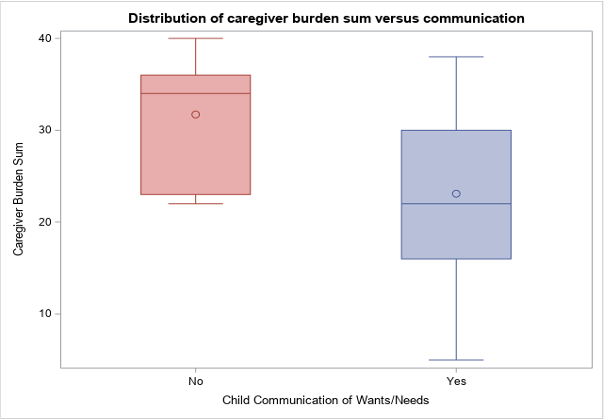Developmental and Behavioral Pediatrics: Autism
Category: Abstract Submission
Developmental and Behavioral Pediatrics: Autism
590 - Applied Behavior Analysis (ABA) From A Caregiver’s Perspective During the Pandemic
Sunday, April 24, 2022
3:30 PM - 6:00 PM US MT
Poster Number: 590
Publication Number: 590.309
Publication Number: 590.309
Rea Mittal, Pennsylvania State University College of Medicine, Hershey, PA, United States; Tonya King, Pennsylvania State University College of Medicine, Hershey, PA, United States; Kellie Custer, Capital Area Intermediate Unit, Elizabethtown, PA, United States; Cheryl Tierney, Penn State Children's Hospital, Hershey, PA, United States

Rea Mittal, BS
Medical Student
Pennsylvania State University College of Medicine
Hershey, Pennsylvania, United States
Presenting Author(s)
Background: With the COVID-19 social gathering restrictions, Applied Behavior Analysis (ABA) agencies are now delivering care through telehealth. Most ABA therapy has historically occurred face to face.
Objective: Our objective is to assess certain aspects of ABA delivered via multiple modalities (e.g., home, center, telehealth) while also considering the burden (stress) of therapy on the caregiver.
Design/Methods: A 62-item online survey was completed between September 2020 and January 2021 by caregivers of children with autism that received ABA therapy during the pandemic in order to evaluate perceptions of care quality and perceived stress. The survey questions were divided into inclusion criteria, ABA delivery modality, demographics, an ABA quality metric rating scale, and caregiver burden.
Results: Of the 68 caregivers who completed the survey, 19 (27.9%), 34 (50.5%), and 15 (22.21% participants utilized telehealth, in home visits, and school-or-center based ABA delivery for their children respectively. Of the 19 participants using telehealth care for their child’s ABA delivery, 17 (89.5%) of them found telehealth to be less effective than in person services.
Almost half (46%) of the participants indicated that at least 1 of 25 core ABA quality metrics were missing in their child’s program.
100% of telehealth participants reported at least one quality metric was missing from their child’s program versus 35% of those receiving care in their home (P=0.0318).
Caregivers that reported the highest stress scores received their child’s ABA only through telehealth. Caregivers that reported the lowest stress scores received school or center-based services.
Lower caregiver stress scores were seen in families who received parent training (Figure 1) (P=0.033) and skills training promoting functional child communication (Figure 2) (P=0.035).Conclusion(s): Most families indicated that their children’s program included all the quality metrics that one would expect in a quality program. However, those that did not tended to be families that received their ABA only using telehealth. Additionally, caregivers who reported higher stress levels were more likely to be receiving telehealth services as compared to in person modalities.
Agencies may want to include parent training to reduce maladaptive behaviors and promote functional child communication, as these characteristics were associated with decreased caregiver burden (P < 0.05).
Rea Mittal CVRM CV.pdf
Figure 2: Caregiver burden versus skills training for promoting functional child communication. On the X axis is the presence or absence of skills training specifically to enhance a child's ability to communicate their wants and needs. Caregiver burden total average score was 31.7 for those who reported “No” and 23.1 for those who reported “Yes”.
On the X axis is the presence or absence of skills training specifically to enhance a child's ability to communicate their wants and needs. Caregiver burden total average score was 31.7 for those who reported “No” and 23.1 for those who reported “Yes”.
Objective: Our objective is to assess certain aspects of ABA delivered via multiple modalities (e.g., home, center, telehealth) while also considering the burden (stress) of therapy on the caregiver.
Design/Methods: A 62-item online survey was completed between September 2020 and January 2021 by caregivers of children with autism that received ABA therapy during the pandemic in order to evaluate perceptions of care quality and perceived stress. The survey questions were divided into inclusion criteria, ABA delivery modality, demographics, an ABA quality metric rating scale, and caregiver burden.
Results: Of the 68 caregivers who completed the survey, 19 (27.9%), 34 (50.5%), and 15 (22.21% participants utilized telehealth, in home visits, and school-or-center based ABA delivery for their children respectively. Of the 19 participants using telehealth care for their child’s ABA delivery, 17 (89.5%) of them found telehealth to be less effective than in person services.
Almost half (46%) of the participants indicated that at least 1 of 25 core ABA quality metrics were missing in their child’s program.
100% of telehealth participants reported at least one quality metric was missing from their child’s program versus 35% of those receiving care in their home (P=0.0318).
Caregivers that reported the highest stress scores received their child’s ABA only through telehealth. Caregivers that reported the lowest stress scores received school or center-based services.
Lower caregiver stress scores were seen in families who received parent training (Figure 1) (P=0.033) and skills training promoting functional child communication (Figure 2) (P=0.035).Conclusion(s): Most families indicated that their children’s program included all the quality metrics that one would expect in a quality program. However, those that did not tended to be families that received their ABA only using telehealth. Additionally, caregivers who reported higher stress levels were more likely to be receiving telehealth services as compared to in person modalities.
Agencies may want to include parent training to reduce maladaptive behaviors and promote functional child communication, as these characteristics were associated with decreased caregiver burden (P < 0.05).
Rea Mittal CVRM CV.pdf
Figure 2: Caregiver burden versus skills training for promoting functional child communication.
 On the X axis is the presence or absence of skills training specifically to enhance a child's ability to communicate their wants and needs. Caregiver burden total average score was 31.7 for those who reported “No” and 23.1 for those who reported “Yes”.
On the X axis is the presence or absence of skills training specifically to enhance a child's ability to communicate their wants and needs. Caregiver burden total average score was 31.7 for those who reported “No” and 23.1 for those who reported “Yes”.